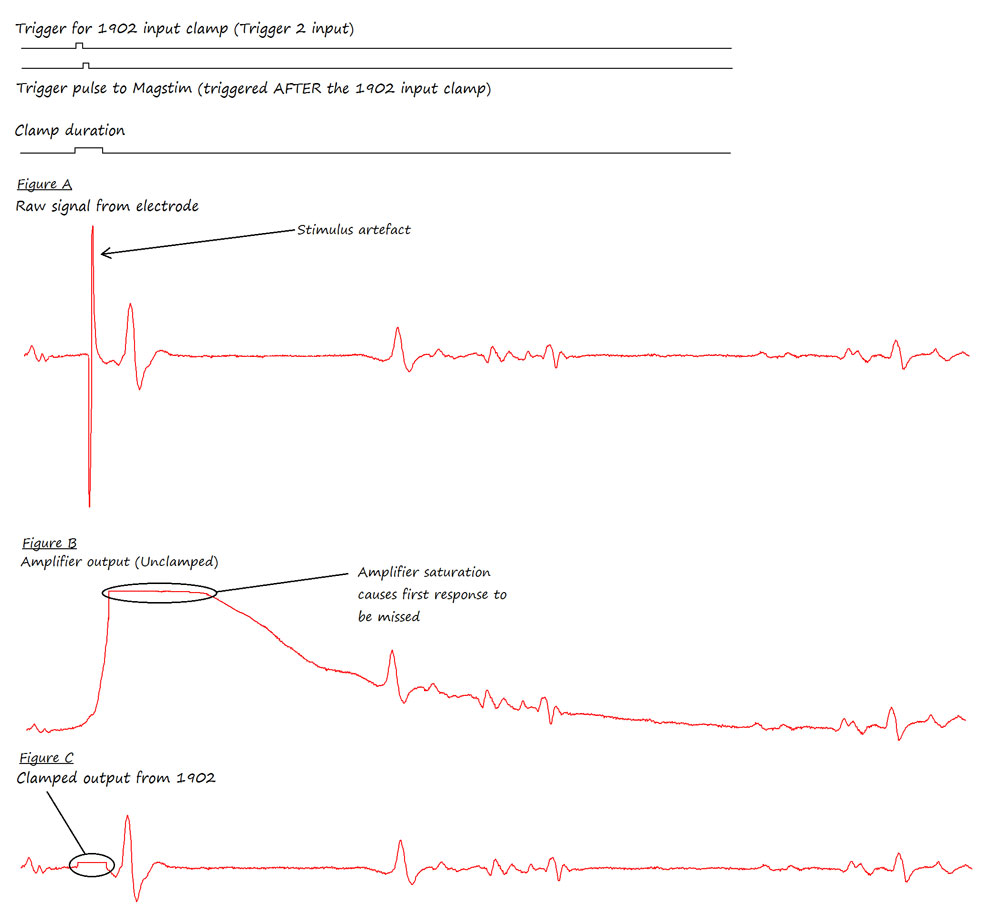Applications
1902s are suitable for direct connection to the subject to record a variety of biological signals including EEG, EMG and ECG. With an additional module, they can also be configured to measure skin conductance. The non-isolated transducer input allows connection to many types of transducers for capture of other data such as force, temperature, acceleration, strain and displacement.
Both Spike2 and Signal software packages include built-in control for the 1902. Each package interacts with the 1902s to automatically adjust scaling and add markers to annotate changes in amplifier settings where appropriate. Amplifier settings are stored in Spike2 and Signal sampling configurations, therefore when switching between experiments, amplifier settings are restored automatically.
Gain ranges
For EMG and ECG work, users usually choose the 100 - 100,000 gain range type, which takes a maximum signal amplitude of ±50mV.
For the smaller signals of EEG and evoked potentials, the ±5mV maximum of the 1,000 - 1,000,000 gain range is a better choice.
1902 and Spike2
Spike2 records event and waveform data into a file with a continuous time base, making it ideal for applications including sleep studies, biomechanics, behavioural experiments and cardiovascular research. Changes to the 1902 gain and other software controlled settings are recorded as text notes alongside the conditioned waveforms.
With the aid of active cursors, you can take measurements automatically while recording the amplified and filtered signals. Features from waveforms such as ECG and blood pressure can be detected, and their times, values and other measurement results plotted to an XY view for display and export in spreadsheet format. Results can also be saved inside the data document as additional channels, marking where the measurement was taken and the result.
1902 and Signal
Signal, being a frame-based recording system, is more suited to applications such as evoked response (visual, auditory, electrical, TMS). It is also ideal for biomechanical applications, for example in conjunction with force plates.
For TMS and electrical stimulation experiments, the 1902 optional input clamp is designed to suppress artefacts which would otherwise saturate the amplifier if the recording site is close to the stimulation point.
Registered in England: 00972132
Registered office:
- Cambridge Electronic Design Limited,
- Technical Centre,
- 139 Cambridge Road,
- Milton,
- Cambridge CB24 6AZ
- ENGLAND.
VAT: GB 214 2617 96
Producer registration number: WEE/BD0050TZ
For our US customers, we can provide tax form W-8BEN, that identifies us as a UK company.
UEI : EQ4LMQ1M2ZS5
CAGE/NCAGE: KB797
NAICS: 423490
Hardware: 84716070
Software: 85235190
By email:
By post:
- Cambridge Electronic Design Limited,
- Technical Centre,
- 139 Cambridge Road,
- Milton,
- Cambridge CB24 6AZ
- ENGLAND.
By telephone:
(Int.+44) (0)1223 420186
From North America (Toll Free):
1 800 345 7794









